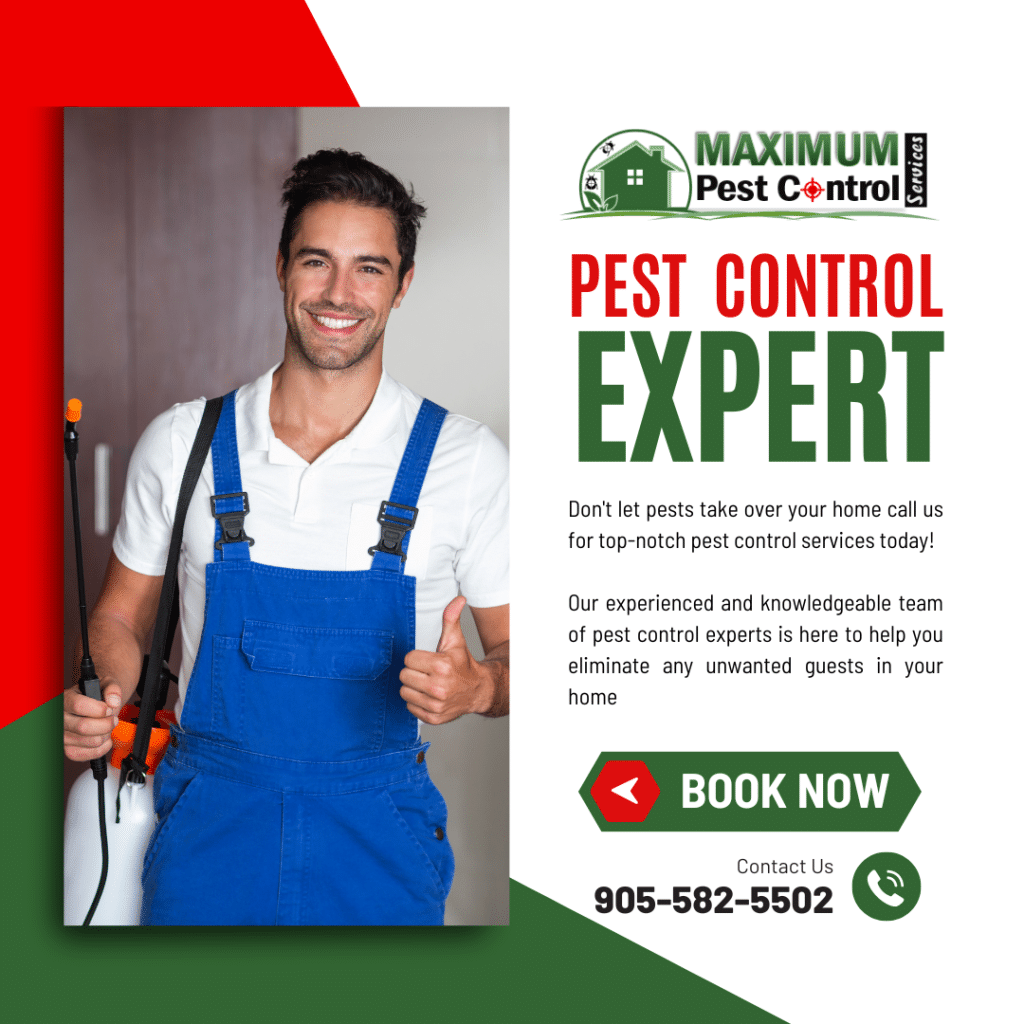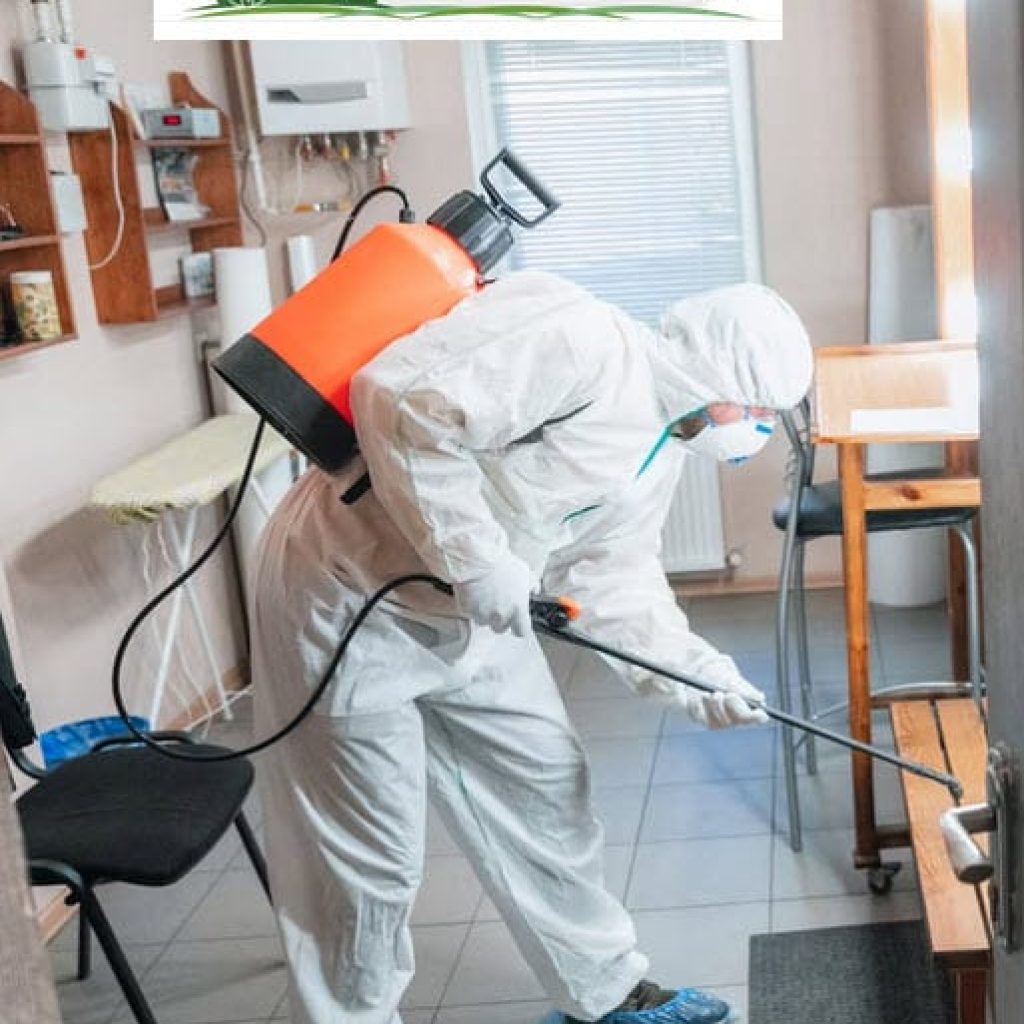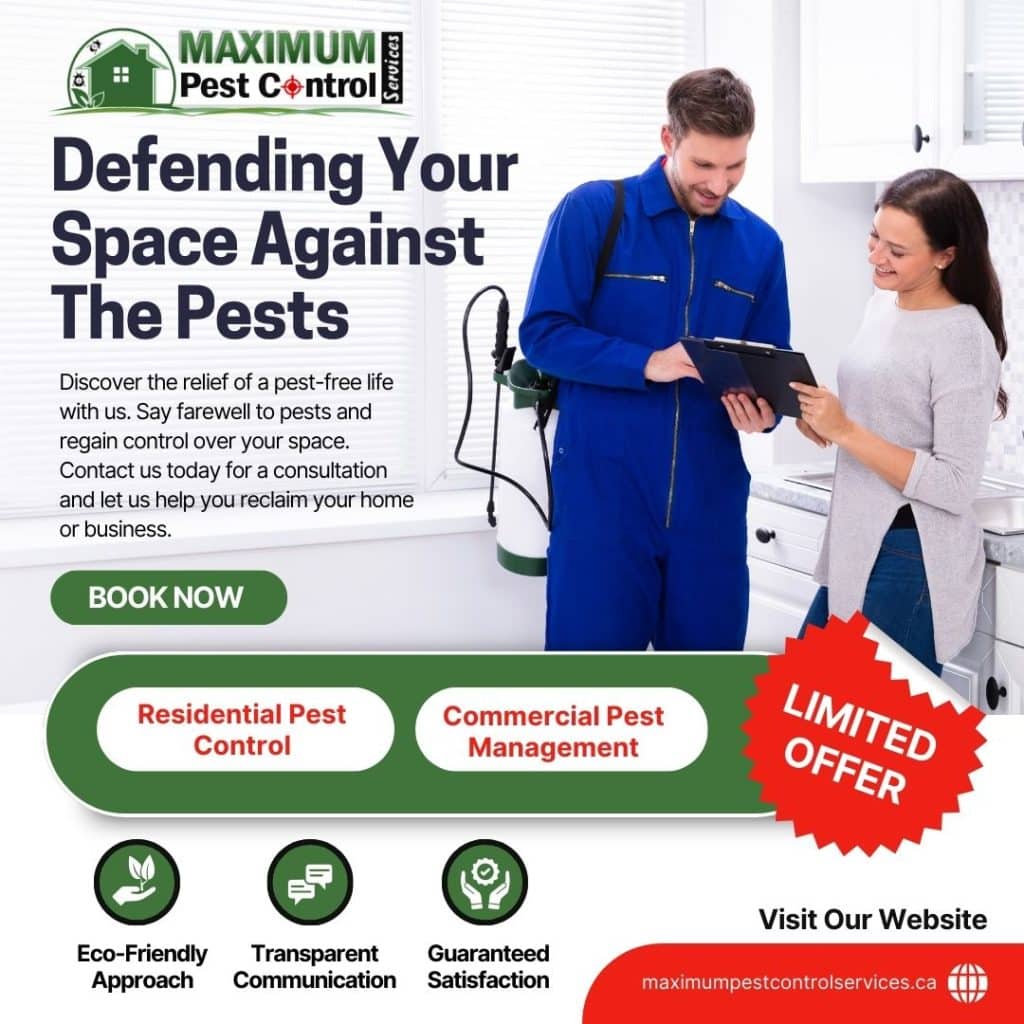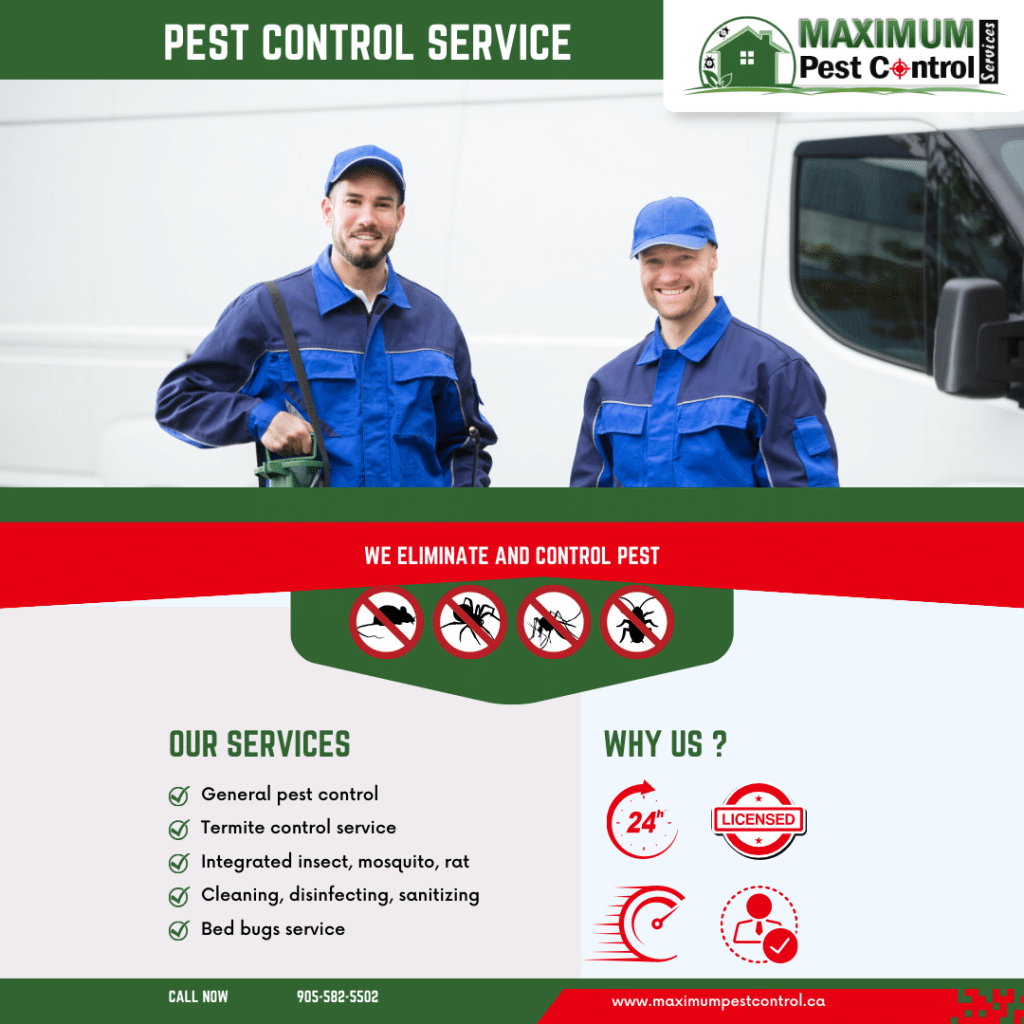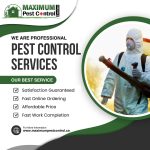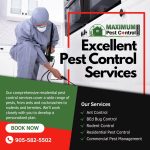
How Safe Is an Exterminator Spray?
Worried about the safety of our products to control pest? Our certified and bonded exterminators use effective and safe sprays to rid your home of unwanted pests; Ants, Centipedes, Bedbugs, Spiders, Pillbugs, Silverfish, Ticks, Fleas, Millipedes, Wasps. Connect with Maximum Pest Control Service Today (905) 582-5502.
It’s definitely important to consider the safety to control products that exterminators use. Parents especially want to know what their kids might be exposed to. When you take a closer look at the ingredients in these sprays and how they work, some things can be concerning. Doing your research helps you make better decisions for your family.
If treatments are necessary, knowing the risks allows you to take precautions. But non-chemical options are usually best if they’ll do the job. No need to bring poisons inside if you can avoid it. Taking the time to understand your options pays off in keeping everyone healthy long-term. An informed homeowner is in the best position to choose methods that protect everyone while still getting rid of pesky bugs. Asking lots of questions is totally reasonable when it comes to something like this!
What Are Exterminator Sprays?
Exterminator sprays refer to the potent pesticides and insecticides used professionally by certified pest control companies. These commercial formulations are designed to be more powerful than over-the-counter options available to consumers to buy.
The active ingredients in exterminator sprays vary but commonly include organophosphates, pyrethroids, carbamates, organochlorines, and neonicotinoids:
- Organophosphates are toxic nerve poisons
- Pyrethroids are synthetic versions of chrysanthemum-derived pesticides
- Carbamates act on the nervous system by inhibiting a key enzyme
- Organochlorines once included DDT before its ban, very long-lasting
- Neonicotinoids are systemic pesticides that plants and soil absorb
These concentrated chemicals are applied in different ways; liquids, dusts, granules or gases meant to flush out pests through their strong fumes during treatment applications.
Understanding How Pesticides Work
To understand the potential health risks pesticides pose, it helps to know how they function at a chemical level. An important distinction is that while meant to eradicate targeted pests, these toxic products can also harm other organisms like humans.
Insecticides specifically attack insect nervous systems in harmful ways:
- They overwhelm or block nerve receptors, often inducing paralysis or death through seizures and respiratory failure in bugs.
Herbicides may mimic or obstruct vital plant biochemistry:
- By interfering with growth processes like photosynthesis, cell division and nutrient uptake through disrupting hormone and enzyme pathways. Some studies link certain herbicides to human endocrine effects.
Rodenticides pose risks through their:
- Slow-acting anticoagulant mechanism that impedes blood clotting, inducing hemorrhaging both internally and externally over multiple feedings until loss of life from bleeding out occurs. This prolonged biological mode of action elevates the health concerns.
Health Dangers of Pesticide Exposure
While intended to eliminate pests, the toxic nature of pesticides also poses inherent dangers to human health through various forms of exposure. In fact, over 1 million insecticide poisonings occur annually worldwide according to estimates.
When absorbed via inhalation, ingestion or skin contact, exterminator spray chemicals can cause concerning short and long-term effects like:
- Headache, dizziness, nausea and other acute symptoms
- Respiratory irritation and inflammations
- Skin and eye rashes or burns
- Neurological issues through nervous system disruption
- Raised cancer incidence with some compounds
- Diminished immune function over time
- Reproductive harm and lower fertility
Young children face especially heightened vulnerability as their organs rapidly develop. But risks exist for people of all ages inflicted by pesticide toxicity. Prevention remains crucial given health issues linked from even small doses.
Key Considerations for Safe Pesticide Application
If you do opt to use an exterminator spray, proper precautions are essential to reduce associated dangers.
Limit Access Before, During and After Application
It’s critical to keep people and pets away from treated areas until the spray has fully dried. Wait at least 2-3 hours before re-entry if possible. To ventilate, Open windows and turn on the fans to neutralize the air.
Ensure Proper Protective Gear
Those applying liquid sprays should wear gloves, goggles, masks and protective clothing to limit exposure. Launder clothes separately afterwards.
Follow All Label Instructions
Never use more than the recommended amount. Read all warnings and strictly adhere to them.
Employ a Licensed Professional
Improper pesticide application greatly increases risks. Leave it to certified experts.
Clean Surfaces Thoroughly Afterwards
Wipe down any spray residue on furniture, floors and other treated areas in living spaces once dry.
By closely following usage guidelines, the risks of pesticide poisoning can be reduced. But hazards remain.
Biodegradable vs Non-Biodegradable Pesticides
Pesticides differ in their capacity to break down naturally, categorized as biodegradable or non-biodegradable. This trait influences environmental and health impacts over the short and long term.
Biodegradable pesticides:
- Break down quicker via microbial breakdown, sunlight or metabolic breakdown within days or weeks
- Leave fewer persistent residuals in the environment
However, non-biodegradable pesticides:
- Remain intact much longer, sometimes indefinitely without degrading
- Are prone to bioaccumulation up the food chain, concentrating toxicity
- Have higher potential to leach into groundwater and migrate off-target
Are Pesticides Beneficial?
Pesticides definitely have their place when it comes to helping farmers and controlling pests. Getting rid of bugs that damage crops or spread disease improves yields and public health. They also protect homes from things like termites and wood destroyers. And let’s be honest, nobody wants to deal with an infestation of ants, roaches, or other pests taking over the house. So there are understandable reasons pesticides are so widely used.
That said, they always carry some risks that can’t be avoided since these are toxic chemicals we’re dealing with. Even when used carefully, accidents and unintended exposure are possible. And the long term effects are still unknown to what the effects might be. This is why safer alternatives should always be tried first if they can do the job. If chemicals are needed, following all safety guidelines closely helps limit dangers as much as we can.
It’s about finding a balance between getting rid of pests effectively while also protecting people and the environment from harm. The benefits have to be weighed against taking precautions seriously.
Choosing the Least Toxic Pesticide Options
If you do opt for chemical, prioritize less hazardous formulas:
- Pyrethrins– Derived from chrysanthemum flowers. Low toxicity to humans.
- Diatomaceous earth – Dust of fossilized algae. Physically damages insects.
- Boric acid – Stomach poison that kills roaches and ants. Low volatility.
- Beauveriabassiana – Fungal pathogen that attacks insects.
Avoid broad-spectrum and non-biodegradable pesticides whenever possible. Research options thoroughly.
Ensuring Safety During Exterminator Spraying
If you hire a professional exterminator, take steps to keep your family safe:
- Discuss all products being used and get complete application details
- Request minimum risk pesticides like boric acid over more toxic options
- Evacuate the area during treatment if possible
- Implement a waiting period afterwards before re-entering
- Ventilate indoor spaces with fans and open windows
- Ask for guidance on safely cleaning treated areas
With planning and care, professional pesticide application can control infestations while minimizing dangers. But non-chemical methods may be preferable.
Implementing Non-Chemical Methods for Pest Management
To avoid risks of exterminator sprays, effective control alternatives include:
- Physical traps – Adhesive traps, light traps, bait stations
- Biological control – Natural predators, pheromones, microbial pesticides
- Habitat modification – Sealing entry points, removing food sources
- Botanical repellents – Essential oils, neem oil, pyrethrins
- Mechanical removal – Vacuuming, trapping, washing
Choose The Maximum Team for Safe, Effective Pest Management For Home or Business
For reliable pest control for homes with your family’s well-being in mind, Maximum Pest Control is a top choice. Our experienced exterminators handle infestations using an integrated approach focused on Eco-friendly techniques. Specializing in eliminating pests safely and effectively is our priority.
Dealing with pest issues requires weighing different factors. Educating yourself on product risks enables making informed decisions for your living space. While chemical sprays may be useful at times, prioritizing alternatives poses fewer concerns.
Discussing your specific pest challenges with Maximum Pest Control Services allows customizing a strategic plan emphasizing protection over harsh treatments whenever workable. Our professionals find solutions balancing convenience and care. Contact Maximum Today (905) 582-5502.

